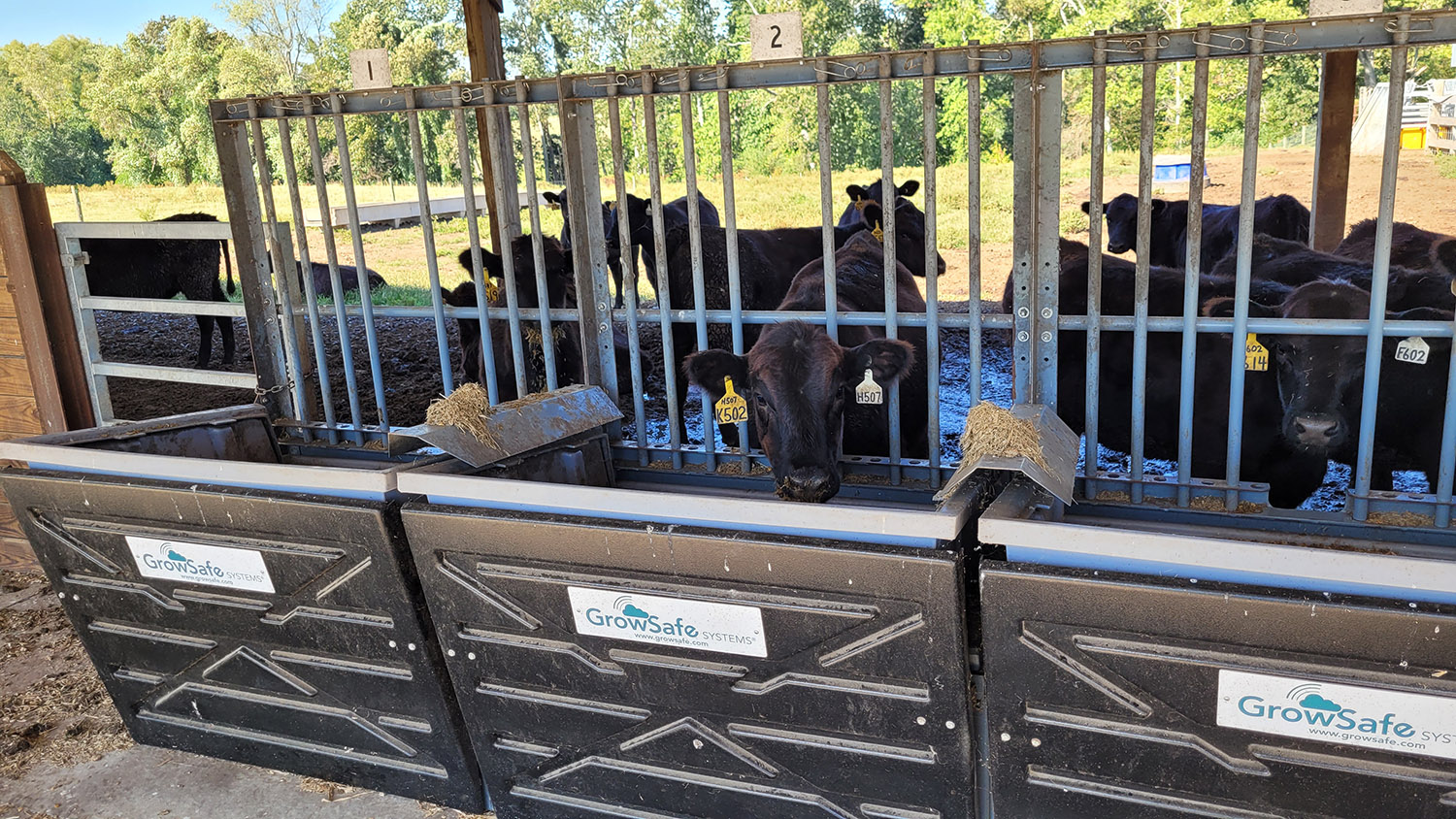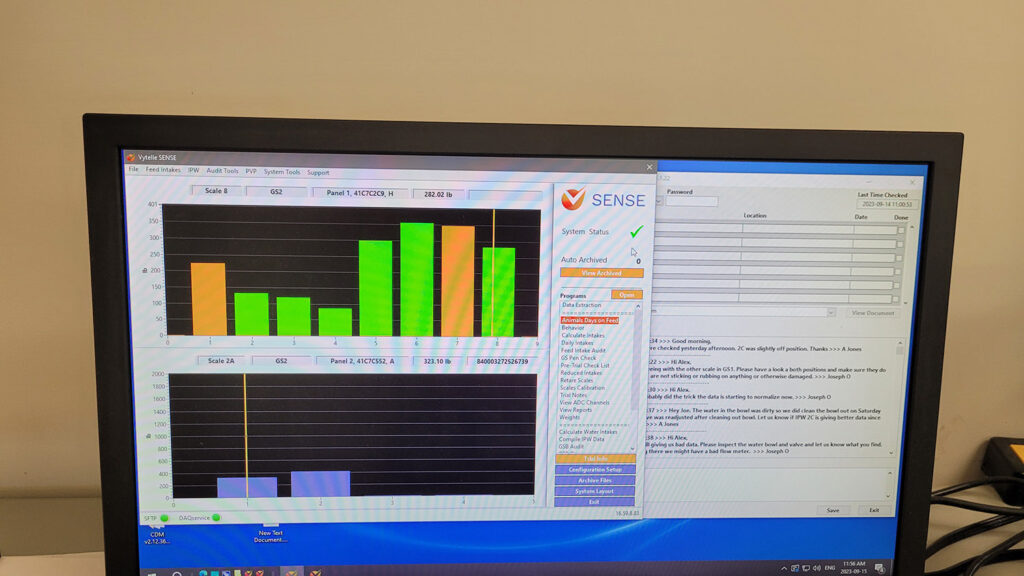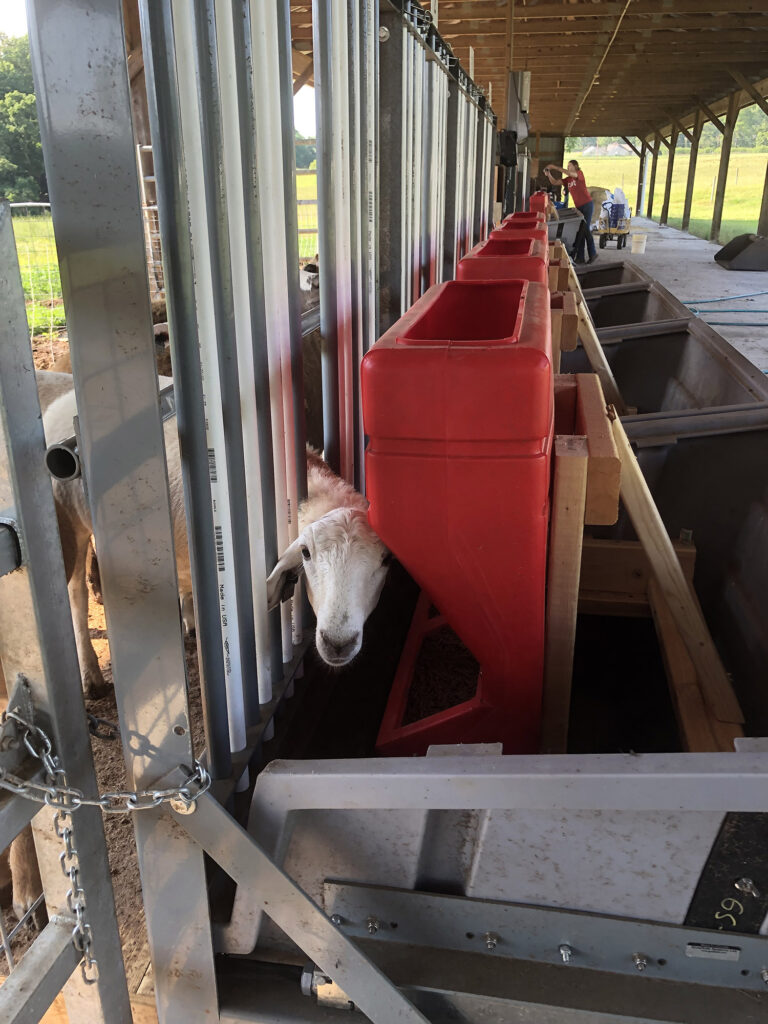Precision Livestock Technology Elevates CALS Research

By Chad Saleska
NC State University’s College of Agriculture and Life Sciences (CALS) leads the pack in driving innovative animal research.
With funding from the North Carolina Department of Agriculture & Consumer Services (NCDA&CS), CALS has committed to precision livestock technology and animal research with the purchase of three state-of-the-art Vytelle SENSE™ systems for research stations in Waynesville, Butner and Laurel Springs. CALS first began using Vytelle (formerly known as GrowSafe) units at the Upper Piedmont Research Station in Reidsville.
“With farmland declining, efficiency is now the name of the game,” says Kyle Miller, superintendent of the Mountain Research Station in Waynesville. “We have to produce more with less by increasing yields and reducing inputs.”
How Vytelle Units Work
In the simplest terms, the Vytelle system weighs individual grazing animals and measures their feed and water intake from their stalls.
The Vytelle system identifies an individual animal using Radio Frequency Identification (RFID) technology read with a transponder. The system records intake values and transmits them to computers in the research stations. Researchers use the data to help make selection decisions to increase efficiency of feed and water use.
“It’s a way to identify variations in the genetics of an animal,” says Loren Fisher, director of NC State Research Stations and Field Labs. “It helps us decide which animals to keep for breeding and to provide valuable data to accurately evaluate the impact of our research on water consumption and growth.”

Efficiency, Health and Environmental Benefits
Feed expenses are the greatest direct cost of livestock production. Feed efficiency varies widely among individual animals. For example, some animals convert 3 pounds of feed into a pound of weight gain, while other animals convert 6 pounds of feed into a pound of gain. Gathering that data and determining the efficiency of a specific diet add to the value of the Vytelle units.
“You can evaluate nutritional supplements and feed additives to see how they affect performance,” says Fisher, who was involved with the first Vytelle system in Reidsville three years ago. “We can vary diets and then measure the rate of gain to determine which diet is most efficient. It allows us to say this is a superior diet over this diet. Or this supplement helps with this but not with that.”
The usefulness of the Vytelle system also includes improved health monitoring of individual animals.
“The system will notify you if there is a change in the feed consumption of an animal,” Fisher says. “It’s an opportunity to identify when that happens before an animal shows illness symptoms, enabling you to treat the animal much earlier.”
Reducing environmental impact is another benefit of the Vytelle system.
“Previous research also indicates that improved feed efficiency is related to decreased greenhouse gas emissions,” says Andrew Weaver, assistant professor of animal science and Extension specialist. “Therefore, selecting livestock that are more feed efficient will allow livestock producers to decrease costs and improve environmental sustainability.”

On the Forefront of Livestock Research and Production
Researchers work to meet livestock farmers’ production needs. Dan Poole, a researcher in NC State’s Department of Animal Science, says the added Vytelle units will help.
“Our team’s long-term goal is to improve productivity and profitability of cattle in semitropical environments to ensure the sustainability of the U.S. beef industry,” Poole says. “We are now well positioned to establish a statewide system to collect, summarize and compare information on the growth and reproductive performance of beef cattle.”
Once system installation is complete, NC State equipment will be at the level of livestock facilities at some of the country’s top land-grant universities, thanks in large part to funding and shared goals from the NCDA&CS.
“It’s a great opportunity for NC State to showcase its commitment to animal research,” Fisher says.
“We have a mutual relationship with NCDA, with some research stations owned by NC State and some by NCDA, but the ultimate goal of all the stations is to support research by NC State faculty. It’s all about investment.”


